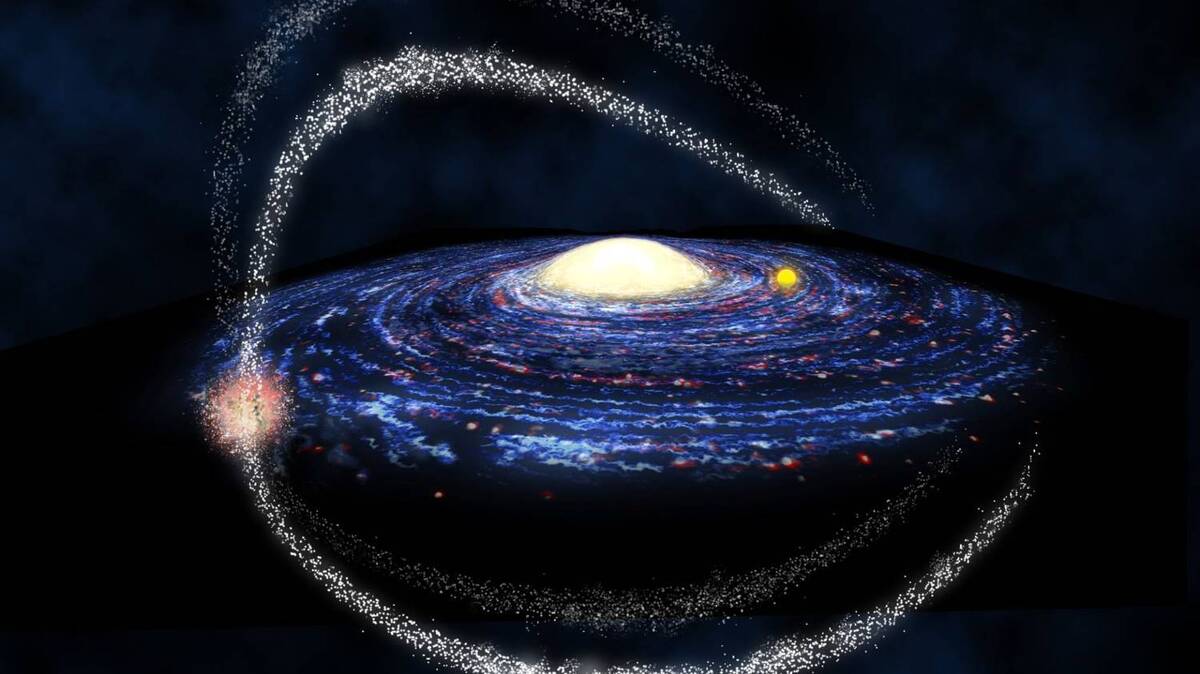Origin of Massive Bubbles in Our Galaxy's Center Hinted by Cosmic Antimatter

MINNEAPOLIS — New observations suggest that bubbles of radiation emanating from the center of the Milky Way originated from a stream of electrons and their antimatter counterparts, positrons. Astronomers believe the excess of positrons moving past Earth represents the result of a massive burst from the galaxy's supermassive black hole following a meal millions of years ago.
The existence of the bubbles, or Fermi bubbles, has been known for over a decade. However, their formation remains a topic of debate. Recent observations have spotted the bubbles in microwave radiation and X-rays.
Physicist Ilias Cholis reports that a jet of high-energy electrons and positrons from the supermassive black hole in a single big burst could explain the bubbles' multi-wavelength light. In the initial burst, most particles would have been launched along perpendicular jets to the galaxy's disk, losing energy upon interacting with other galactic matter and causing emission of different wavelengths of light.
Somed particles could have escaped along the galactic disk, perpendicular to the bubbles, and ended up passing Earth. Positrons detected by the Alpha Magnetic Spectrometer on the International Space Station suggest an excess of positrons whose current energies could correspond to activity from the galactic center between 3 million and 10 million years ago, coinciding with when the Fermi bubbles formed.
Cholis and Iason Krommydas analyzed Alpha Magnetic Spectrometer data and found the result supports the idea that the galaxy's central black hole was significantly more active when the Fermi bubbles formed.
Donations enable the publication of nonprofit news organizations like ours which aim to provide accurate, stimulating scientific news to the public, particularly the next generation. Please donate today to support the growth of quality science journalism.




